What you’ll learn
You’re going to learn how to manage your AI prompts with Pezzo, so you can streamline delivery and collaborate with your team. This includes:- Creating a prompt
- Basic Prompt Engineering
- Testing your prompt in the Pezzo Platform
- Committing and publishing your prompt
- Consuming your prompt using TypeScript
Create your first prompt
This tutorial assumes you already signed up to Pezzo Cloud and created a new project. If you haven’t done so, please sign up to Pezzo Cloud.
FactGenerator.
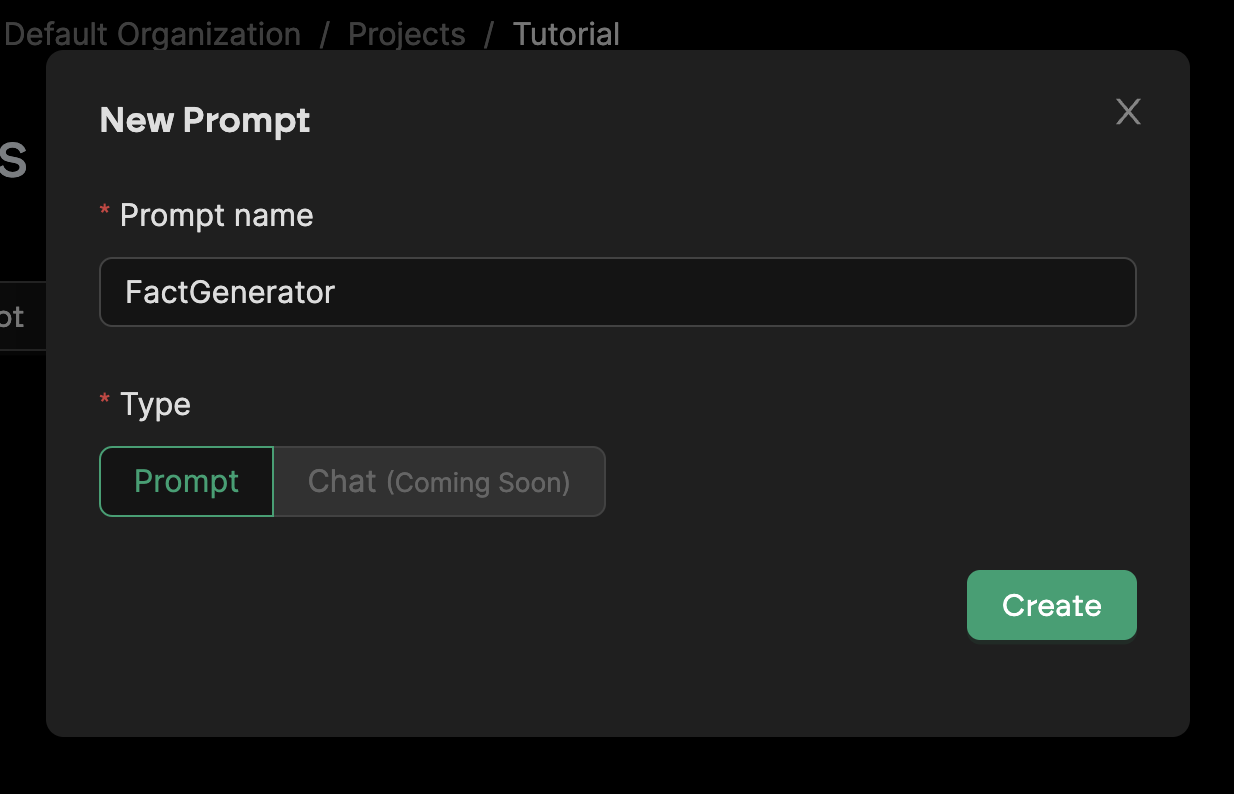
New Prompt Modal
Prompt Engineering
The Prompt Editor is the first screen you will see after selecting/creating a new prompt. This is wehere you will do some prompt engineering, commit and publish your prompts. You can find two main sections in the prompt editor - the Content and the Settings.Prompt content
The Prompt Content is where you will write your prompt. In our case, we want to ask the LLM (in our case, OpenAI) to generate facts about a topic. Simply copy and paste the following:Prompt settings
Depending on the LLM provider, the settings will vary. In our case, we will use the OpenAI API. Feel free to adjust the settings to your liking. For this tutorial, make the following adjustments:- Temperate:
0 - Max Response Length:
1000
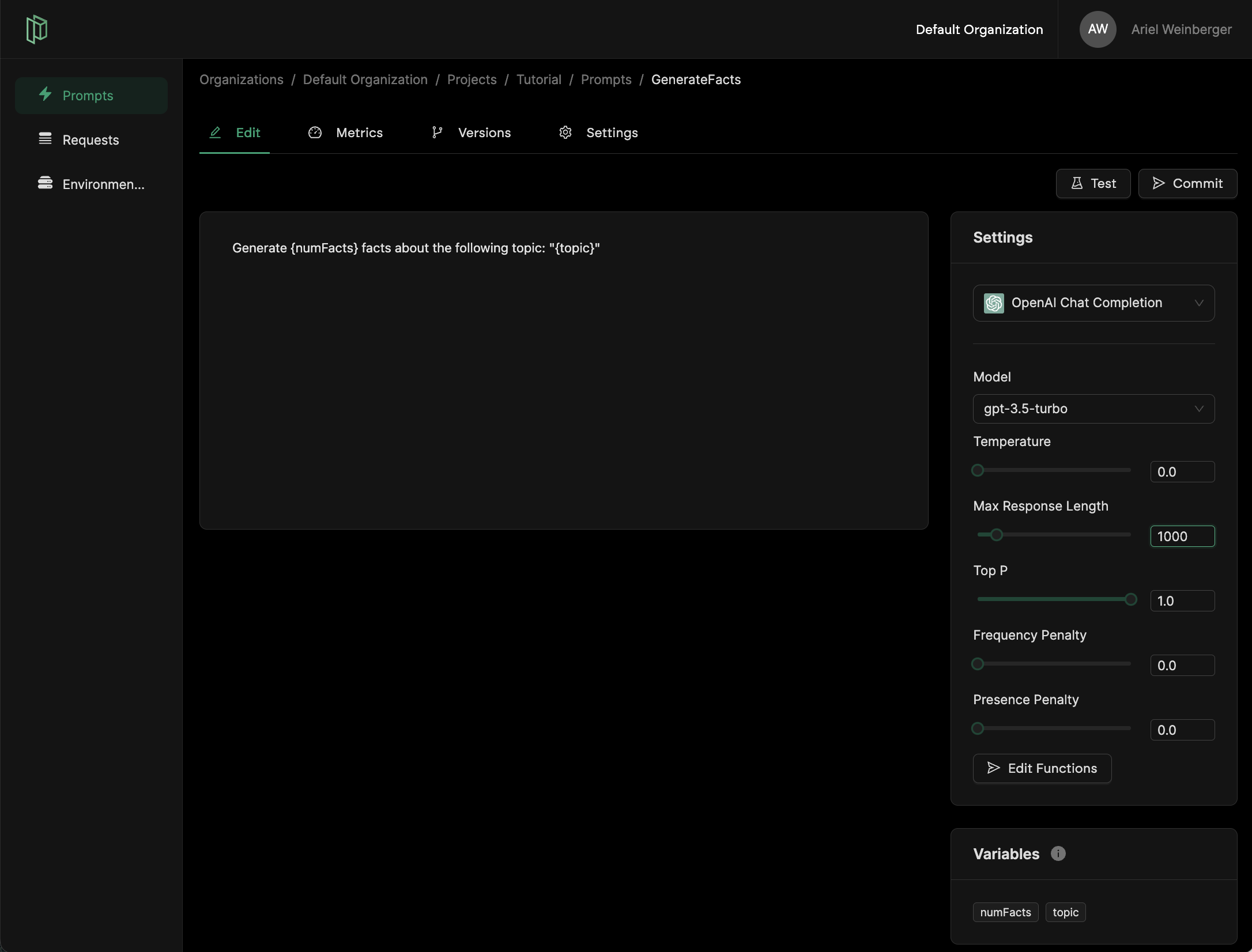
The Prompt Editor after defining the content and settings
Testing the prompt
Pezzo allows you to test your prompts before publishing them. This is a great way to quickly iterate on your prompts and make sure they’re working as expected. To test your prompt, simply click the Test button. This will open a modal where you can enter the values for the variables you defined in the prompt content. For example, if you want to generate 3 facts about cats, enter the following: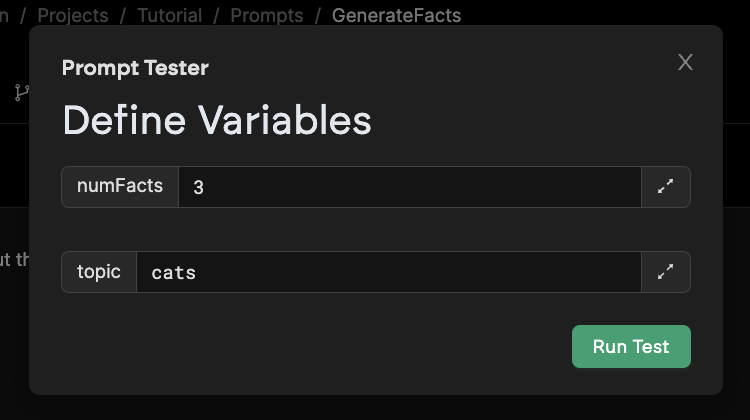
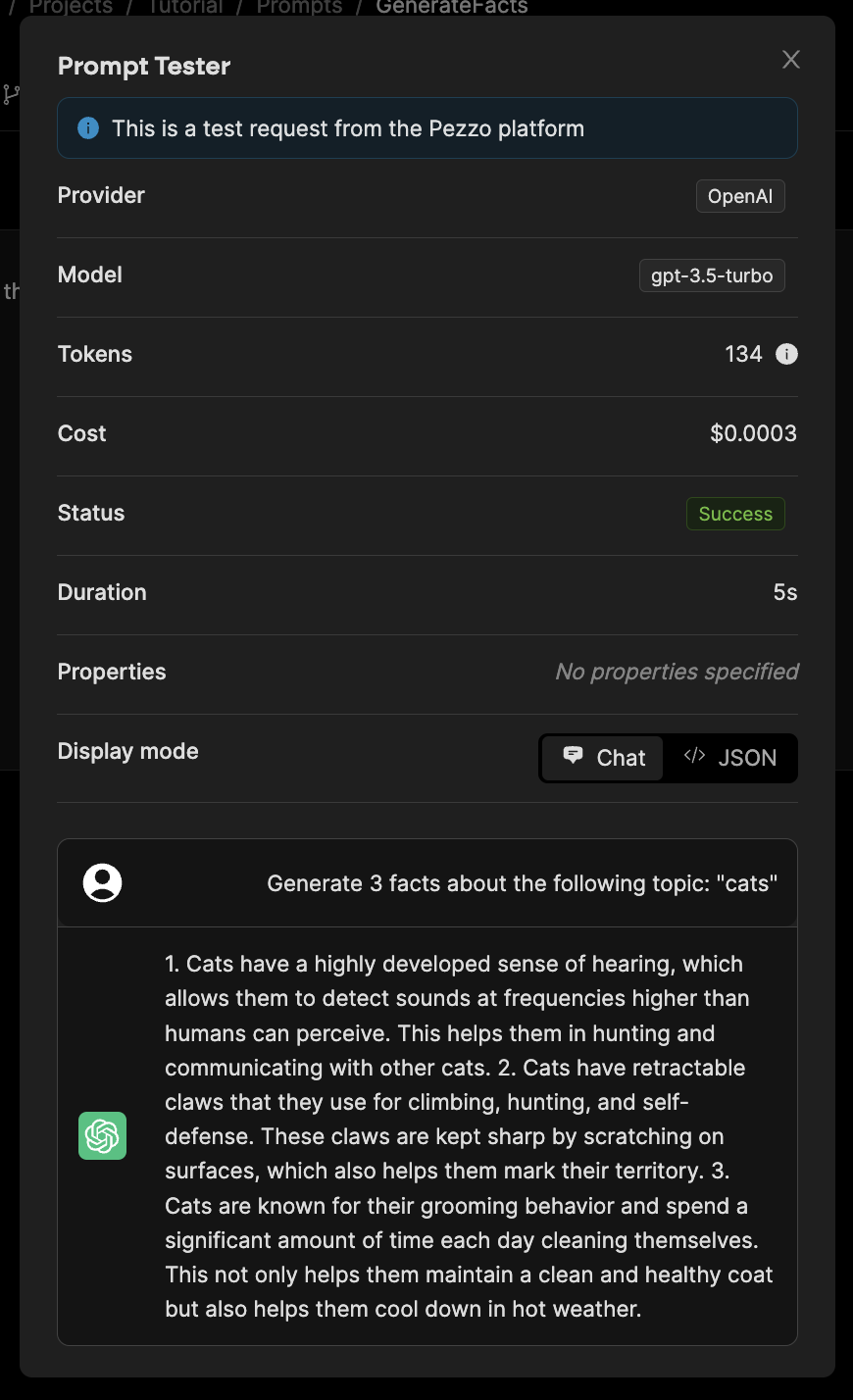
Prompt Test Results
- Token usage
- Cost
- Status (success, error)
- Duration
- Request body
- Response body
Commiting and publishing
Once you’re happy with the prompt, there is one more step you need to do before you can consume it in our application. You need to commit and publish the prompt. Simply click the Commit button at the top right, and provide a message, such asInitial version. Then, hit Commit.
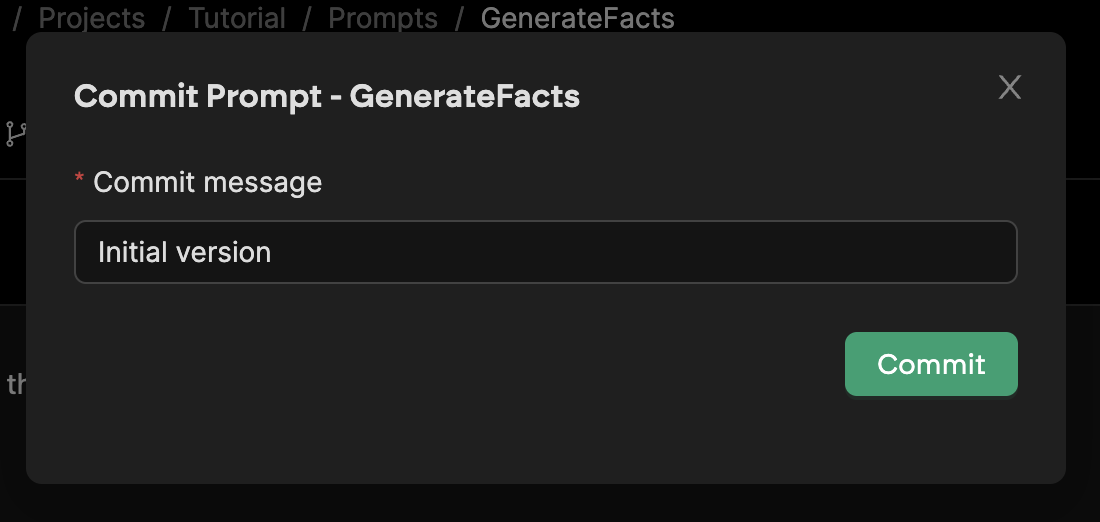
Commit Modal
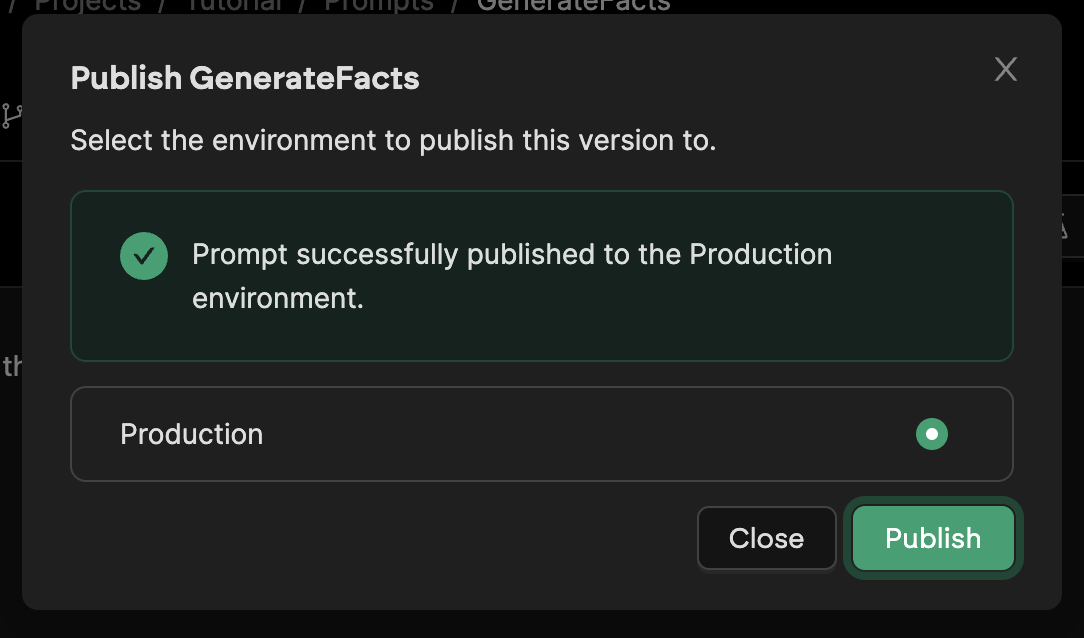
Publish Modal
Every Pezzo project comes built in with a Production environment. You can manage your environments in the Environments page of your project.
Consuming the prompt
In this part of the tutorial, you’ll learn how to consume the prompt you just published in a TypeScript application. For the full Pezzo Client documentation, you can click here.Install depdendencies
Install the Pezzo Client and the OpenAI SDK:Consume prompt via Pezzo Client
Here is a code example:Node.js
- First, we initialize the Pezzo client and the OpenAI client. We pass the Pezzo client to the OpenAI client so it can use it to fetch the prompt.
- Then, we fetch the prompt from Pezzo using the
getPromptmethod. This method returns the latest version of the prompt for the desired environment. - Finally, we call the OpenAI API using the
createChatCompletionmethod. This method takes the prompt as an argument and returns the response from the OpenAI API.

